- Call us: 01444 237070
- Contact Us
- Stores
- Sign In / Register
-
- Back
- Used Cameras
- Used Accessories
- Used Lenses
- Used Video
- Used Film Equipment
- Used Stock Alert
- Used Blank Test
- Sell or Part Exchange
- Used Clearance
- Recently Added Used Equipment
- Park Picks
- All Used Black Friday Deals
- Faulty
- Used Week Offers
- Back
- Trade-In
- Blog
- New in
- Call us
- Contact us
- Stores
- Sign in
- Categories
- Tips & Inspiration
- Reviews
- News
- Events
- Features
- Buying Guides
- Competitions
The Complete Guide to Digiscoping
Spotting scopes are a familiar tool among wildlife observers, photographers, birders and more. Your camera’s lens can only take you so far in nature observation – viewing and capturing wildlife in its natural habitat is hugely rewarding at a much larger magnification.
However, as wildlife photography grows in popularity, enthusiasts often look to combine the power of their spotting scope with a digital camera. Digiscoping is the most widely used way to do this, gaining traction from both users and brands. In this article, we’ll dive into what digiscoping is, and all the equipment you’ll need to start today.
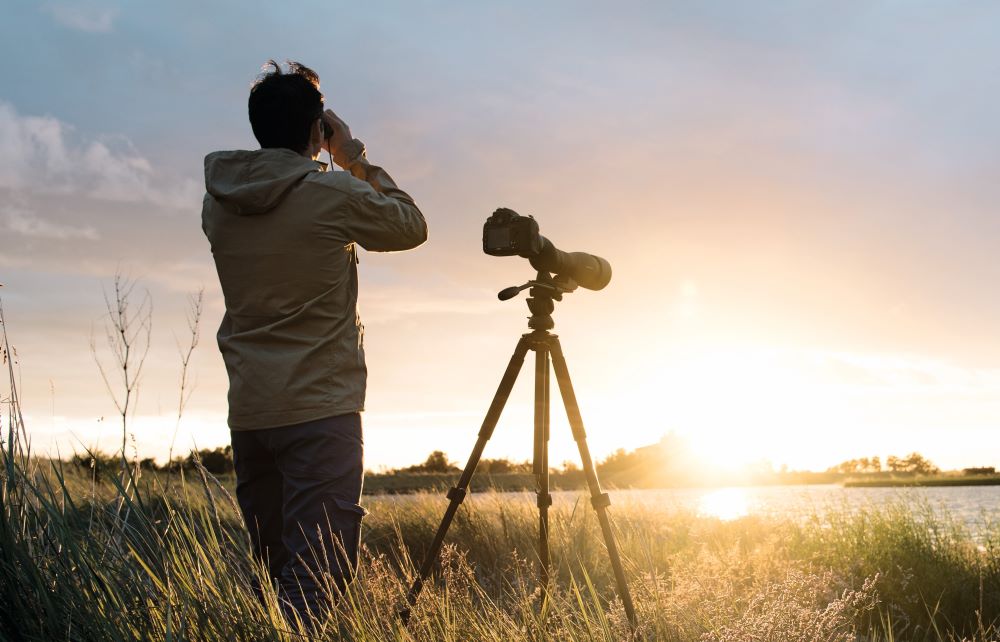
What is digiscoping?
On searching digiscoping, you’re likely to be met with a complicated definition hinging on “afocal photography”. The concept is, in fact, very simple – using a smartphone or digital camera to take images or videos through a spotting scope. Afocal photography (and digiscoping in turn) is a simple, inexpensive way of extending the reach of your camera and lens.
The technique has been popular since the turn of the millennium. As point-and-shoot digital cameras became popular, the photography community discovered that shooting through a spotting scope achieves impressive results in the form of a distant circular image. It’s the easiest way for wildlife photographers to enhance general observation, and quickly capture moments in nature.

The term has become even more prominent in recent years as smartphone photography has blossomed. As an ever-present versatile option, it’s brilliantly suited to the task at hand. Digiscopers understand there’s less of a focus on image quality and more on recording simple images at high magnification without the burden of high cost.
Digiscoping with an interchangeable lens camera will never match the image quality of the lens you’re using. Despite this, you can achieve priceless mementoes of wildlife and enhance your scope’s observation abilities for a fraction of the cost!
Should I use a camera or a smartphone for digiscoping?
Digiscoping was popularised at a time before the smartphone camera. Therefore, the traditional idea of digiscoping has always been associated with compact digital cameras and DSLR cameras. Adapters for DSLRs and larger mirrorless cameras are usually far more robust to support the camera’s weight and are specific to each camera.
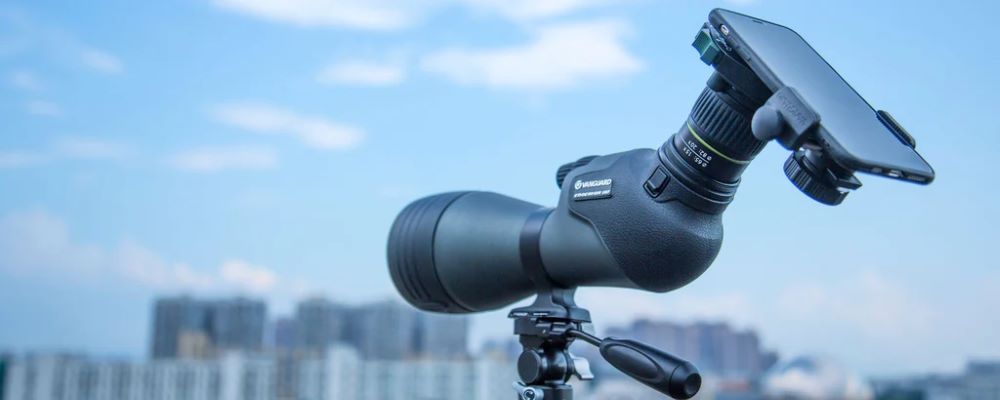
Smartphones are hugely popular among birders and wildlife watchers, where their enthusiasm for nature usually comes before photography. The adapters for smartphones are smaller and much more universal, and the combination of smartphone and adapter is far less bulky. You can use a smartphone with binoculars/monoculars to the same effect, unlike standalone cameras. However, by using a phone you do sacrifice manual control and a small amount of quality.
How do you digiscope?
If you’re using a digital camera, there are a few more steps you need to follow:
- Bring the zoom down: by having your scope’s magnification at a minimum, it will be far easier to find your subject
- Focus the scope.
- Focus your camera: this is usually easier to do using manual focus, as sometimes the autofocus can struggle with the circular image produced by your scope.
- Adjust: from here, balance your zoom with the focus of your scope and camera until you’re ready to take the shot. This may take a bit of time and experimentation.
A smartphone will do most of the work in regards to focus without movement, and will automatically adjust your exposure. You can choose to use the digital zoom on your smartphone; however, this will result in a loss of image quality.
When shooting through the scope, there’ll be a tunnel effect where the image appears circular. This requires you to crop your shot for a rectangular image - it’s worth paying attention to this as you’re shooting to ensure you get everything you want in the correct area.
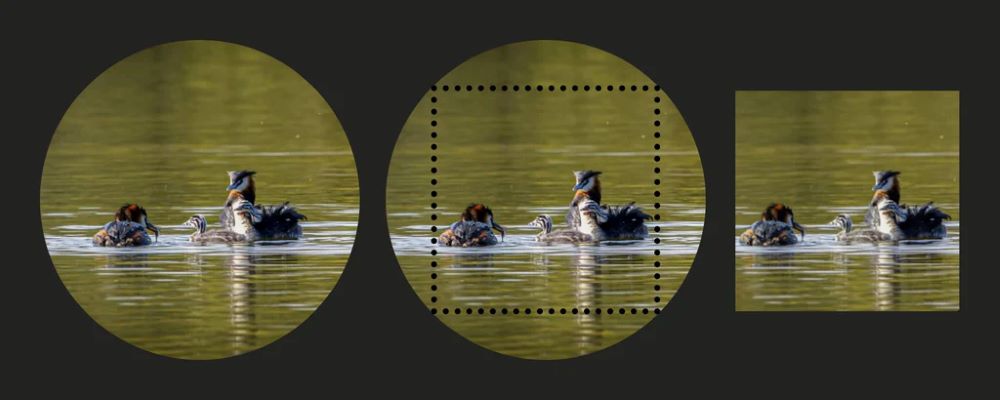
Best spotting scopes
The most important part of your digiscoping setup is arguably not the camera or phone that you use – it’s the spotting scope itself. Truthfully, digiscoping appeals to birders and wildlife watchers before photographers, so most users looking to get into it are looking to prioritise the performance of their scope.
The price of a spotting scope depends on its magnification and its optical quality. Less expensive spotting scopes are much more compact, but won’t give you the same level of magnification and light transmission that a premium model would provide. More accessible manufacturers like Nikon, Hawke and Viking offer brilliant options for getting started, while a Zeiss or Swarovski spotting scope will feel luxurious to use as a result of their premium glass.
Below, we’ve compiled a short list of our favourite spotting scopes for all levels of nature enthusiasts.
- Nikon Fieldscope ED50: this all-rounder comes with built-in waterproofing and fog-proof nitrogen construction while remaining compact and lightweight. Importantly, it’s compatible with Nikon’s scope accessories which enable digiscoping with Nikon cameras.
- Zeiss Conquest Gavia 85: While the level of quality this scope provides doesn’t come cheap, it combines flawless Zeiss optics with clever features like a rapid-focus mechanism, smooth zooming and a near-focus mode. Its 85mm diameter lets the light flood right in, enabling use with huge magnification. For the greatest performance possible, the Zeiss Victory Harpia 85 and 95mmspotting scopes are somehow a step up!
- Hawke Nature-Trek 20-60x 80mm: A perfect introduction to spotting scopes. It pays extra detail to ergonomics with an adjustable eye cup and a soft protective colour, along with internal prisms for colour and contrast while remaining inexpensive. This scope even has a compact counterpart, great for both beginners and enthusiasts on the go.
- Viking Swallow 12-36x 50mm: The ultimate option for portability. This 626g spotting scope packs a decent magnification range, along with waterproofing and nitrogen-filled elements. It’s compatible with the Viking Universal Smartphone Adapter for digiscopers.
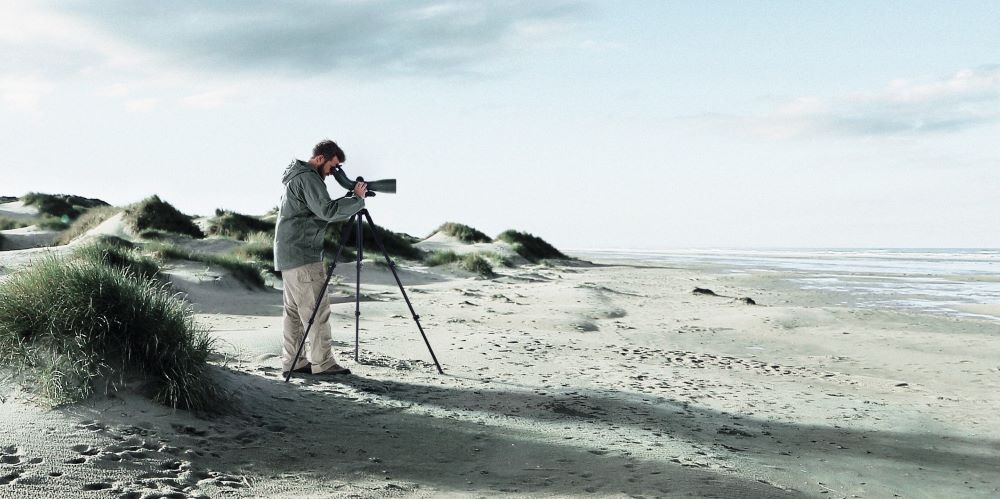
How do you choose a spotting scope?
Choosing a spotting scope can be quite an intimidating process, as they’re relatively niche products where picking out what suits you can be a challenge. Three main factors should dictate your choice:
- Magnification: Just as important as the focal length of a lens. In a spotting scope, the viewfinder (‘objective lens’) provides the magnification. For most scopes, the eyepiece can be changed to suit your requirements. Many scopes also enable zooming to bring your image even closer to your subject and broaden your range of subjects. Importantly, higher magnifications mean a darker image and a less steady image.
- Objective lens size: This controls how much light reaches your eye. The lens body’s diameter dictates how bright the image will be, with a wider lens producing a brighter view. Brighter scopes are usually much larger and heavier but are perfect for high-magnification eyepieces.
- Body: The body of your spotting scope is crucial to consider. Size is a main factor, as using any equipment outdoors calls for portability. Furthermore, scopes can be either straight or angled – depending on the position you’re observing from, one could be far more comfortable than the other.
Digiscoping adapters
To get the most out of a digiscoping setup, a digiscope adapter is vital. As the trend does seem to be moving towards smartphone photography, almost every major spotting scope brand now offers a digiscope phone adapter to complement their range.
Vanguard is confidently buying into the smartphone digiscoping user base with four adapters. The Vanguard VEO PA-65 Universal Digiscoping Adapter takes all smartphones and is compatible with their great spotting scopes.
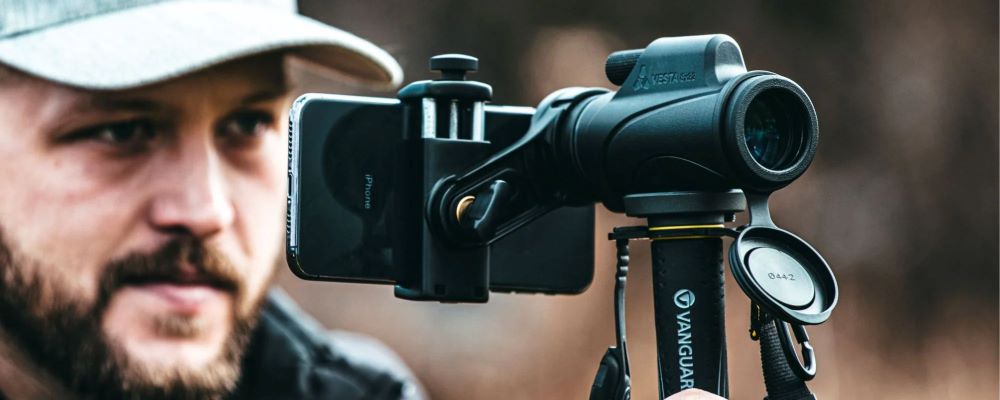
For its range of premium spotting scopes, Leica also has adapters for all mounts in their ecosystem – a universal adapter for SL/CL/TL Mount cameras, and a separate one for M Mount cameras. The Leica APO-TELEVID 82 Spotting Scope is the perfect tool for experiencing nature close-range, being both light and weather-sealed.
Adapters from Swarovski and Zeiss are also available for digital cameras. If you’re looking to discover our full range of digiscoping adapters for both smartphones and digital cameras, explore our collection of binocular and spotting scope accessories, which we’re certain will have the perfect adapter for your system.
Additional Equipment
If you’re using a spotting scope, it’s almost certain that you’re going to need a support. Whether this is in the form of a tripod or a monopod, they help to keep your image stable, which is very challenging at high magnifications. In addition, they’re usually heavy, with most weighing upwards of 2kg before attaching a phone or a camera.
Tripods are the best way to do this. For what you’ll be using your digiscope system for, a rugged tripod for outdoor use like the Vanguard Alta Pro 3VRL 303CT, which has a huge 25kg load capacity, and can reach a height of 1.7m without extending the centre column. Using this with scopes like the Vanguard VEO HD 80A makes for an excellent combination.
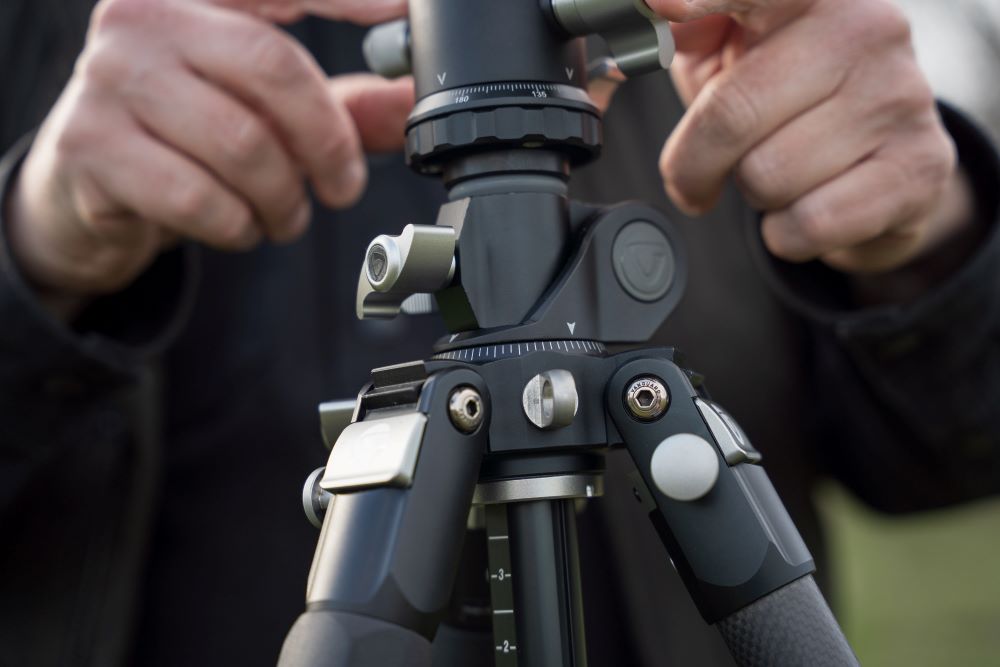
Some manufacturers also produce tripods designed for use with spotting scopes – for instance, the ZEISS Professional Carbon Tripod pairs perfectly with ZEISS’s range. Viking also offers a more entry-level tripod, the Viking Swallow Tripod, which can easily handle the load of its scopes.
You may also want to purchase a remote shutter for your camera when digiscoping to reduce camera shake and keep the image central. These are brand-specific and connect either through a cable or Bluetooth connectivity.
At Park Cameras, we’re constantly striving to support and inspire photographers, wildlife or otherwise, in the UK and worldwide. Feel free to explore our leading range of optics, digital cameras, and accessories today.
Share this post:
By Thom Pyle on 19/06/2024

Trade in your old equipment
Fast and easy trade in service ensures your old gear is collected efficiently and you are paid quickly! It's very simple to trade in your unwanted photography gear. Just head over to our dedicated Sell or Part Exchange page, fill out the details, and we'll get back to you with an offer for your old gear. Take the cash, or put it towards the cost of your new gear. It's up to you! Find out more
sign up to the newsletter
Keep up to date on the latest photography news, events and offers. Sign up now
